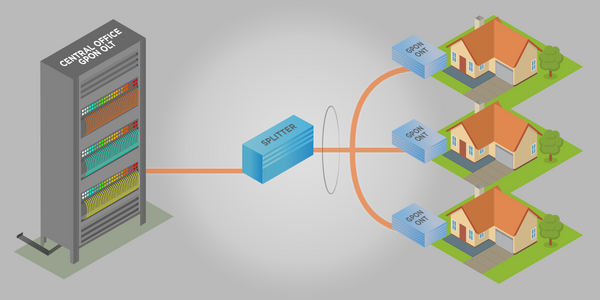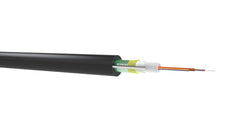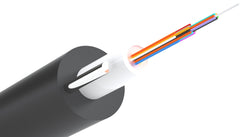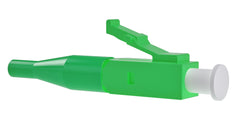What is fiber to the home (FTTH)? - Structure and components
Rapid, low-latency and high volume information communication is rapidly growing worldwide, which has as well increased the need for inexpensive high-speed access for millions of Internet users and customers.
What’s the solution?
Internet Service Providers found that Fiber To The Home is the future-proof solution that could solve this problem.
|
FTTH is one of the most important technologies for today and future’s networks, because not only it increases the access to bandwidth, but reduces equipment and maintenance cost while intensely improving Quality of Service. Projections specify that individual user Internet use will reach 100Mbps and will eventually go to 1Gbps. And fiber optic is the only transmission medium that can support such speeds at long distances. |
FTTH Networks Architecture
There are two types of FTTH architecture categories, Active Optical Network (AON) and Passive Optical Network (PON).
At this point, you would ask, is there’s a difference?
According to the Fiber Optic Association, Active Optical Networks are the easiest way to connect homes with fiber, because
Fiber connects homes to the ISP. But, although it provides the maximum amount of bandwidth, it tends to be expensive because it requires every home to have a dedicated fiber.
Instead, Passive Optical Networks make it possible to share expensive fiber components due to the use of splitters, which divide an input and allows broadcasting services to several homes.

Therefore, PON architecture offer more advantages because a single shared optical fiber can support multiple users.
FTTH Network Equipment
FTTH deployments require a lot of planning and elements to expand from the Access Node to the subscribers’ premises.
In a fiber optic network, there are two basic elements:
An Optical Line Terminal (OTL) located at the ISP side and an Optical Network Unit (ONU) placed at the customer’s premises.
The connection between these two elements is made with both optical and non-optical equipment and components.
Non-optical equipment consists in
- Hardware
- Cabinets
- Patch panels
- Fiber closures
- Pedals
And when it comes to optical components we are talking about splices, couplers and adapters, connectors, fiber cables, connectors, splitters, patch cords, drop cables and drop terminals.
Passive equipment
Fiber cables
Installing fiber optic cables is one of the most expensive procedures when deploying a PON Network. Cable installation can be underground (burial), inside ducts and on poles and towers (aerial).



Splitters
According to the Fiber Optics Association, these passive elements take input and divide it to send the signal to several users, which dramatically reduces costs.
Connectors
Simplex connectors are the most used in FTTH deployments.
The most commonly used are:



Multifiber connectors are also acquiring popularity, because they can hold from 4 to 72 fibers at the same time, being the MTO, the most popular one.
The most common connector type used in PON network is APC (Angle Physical Contact) connector, because its eight degree polished ferrule minimizes loss:
- Return loss: -60 dB.
- Typical loss: 0.5 dB.
Which avoid transmission problems. APC connectors can be certainly identified by their green color.
But how do fiber connectors mate?
For fiber optic connectors to mate between each other they need couplers, also called adapters, these elements come in many versions allowing to connect simplex or duplex cables.
Fiber connectors mate by aligning the fibers inside the connector and then mechanically securing the two connectors together. There are numerous types of fiber connectors, including SC, LC, ST, and FC. Each type of connector has a slightly different design, but the basic process of mating the connectors is the same.
To mate two fiber connectors, you will need to first clean the ends of the fibers to remove any dirt or debris. Next, align the fibers inside the connectors by holding the connectors next to each other and looking through the fibers to ensure that they are properly aligned. Once the fibers are aligned, you can mechanically secure the connectors together by pushing them together or locking them into place with a latch or clip.
Fiber optic couplers are also designed for multimode and single mode cables and are generally used to connect cables with similar connectors
- SC/APC to SC/APC.
- ST/APC to ST/APC
- LC/APC to LC/APC.
But hybrid fiber optic couplers accept dissimilar connectors, so you can mate:
- SC/APC to ST/APC.
- SC/APC to LC/APC
- LC/APC to LC/APC and so on.
Fiber optic coupler types are as diverse as fiber optic connectors. They can be FC, LC, SC, ST and MT-RJ and they also have different colors according to how the connector ferrule is polished:
- Green is for APC.
- Blue is for single mode PC and UPC.
- Beige is for multimode PC and UPC.
As with connectors, SC/APC couplers along with ST/APC and LC/APC are the most used fiber optic couplers in FTTH passive optical networks.

The FTTH council points out that when it comes to premises (houses, large and small businesses) drop cables typically terminate onto the structure and externally route to a termination box.
Termination boxes are equipped with:
- Splice trays: Let fibers from outdoor cables to be spliced to pigtails that then will be connected with the Optical Network Unit (ONU), the point where the passive network ends and the active equipment is installed.
- Fiber optic couplers to allow the connection.
Beyondtech supplies couplers in simplex and duplex style for single mode and multimode applications. SC/APC couplers are one of the most reliable kind of adapters, which is why they are broadly used in LAN, WAN, and CATV systems besides FTTH. This is pretty used in Europe too, our Beyondtech Europe team is also glad to help you any request that you have.
UPDATE 2022:
Fiber-to-the-home (FTTH) technology has seen a number of developments and updates in recent years. Here are a few examples of updates that have occurred in 2022:
-
Increased availability: Many service providers have been working to expand their fiber optic networks to more areas, making it possible for more people to get access to high-speed internet and other services delivered over fiber optic lines.
-
Advanced equipment: There have been a number of updates to the equipment used to build and maintain fiber optic networks, including new fiber optic cables and connectors, as well as improved splicing and testing equipment.
-
Increased speeds: Service providers have been working to increase the speeds that are possible over fiber optic lines, making it possible for people to get faster and more reliable internet connections.
-
Improved reliability: The reliability of fiber optic networks has continued to improve, with fewer outages and disruptions compared to older technologies like copper wire or coaxial cable.
-
New services: In addition to internet access, many service providers are now offering a range of other services over their fiber optic networks, including television, phone, and home security.
Source: Beyondtech
Cover Image: Vincent Laforet






